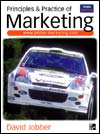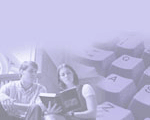Answer the self-test questions below and then click on 'submit' to send your answers. The test will be marked instantly, so that you can see how well you have done.
 |
1 |  | 
A buying centre may contain five people performing a number of roles. The buyer is: |
|  | A) | The person who holds the most authority in the buying centre |
|  | B) | The person who attempts to persuade others in the buying centre |
|  | C) | The consumer of the product |
|  | D) | The person who conducts the transaction |
|  | E) | The person who begins the buying process |
 |
 |
2 |  | 
Joint buying decision-making is more common when: |
|  | A) | The household contains one working person |
|  | B) | The household contains a married couple |
|  | C) | The household contains several young children |
|  | D) | The household has a high income |
|  | E) | The household contains two income earners |
 |
 |
3 |  | 
An identification of the roles played within a buying centre is a prerequisite for: |
|  | A) | Deciding on the best distribution channel |
|  | B) | Targeting persuasive communications |
|  | C) | Planning the marketing mix |
|  | D) | Setting the product price |
|  | E) | Developing a new product |
 |
 |
4 |  | 
In the decision-making model flow chart, the second stage refers to: |
|  | A) | Purchase |
|  | B) | Problem awareness |
|  | C) | Evaluation of alternatives |
|  | D) | Information search |
|  | E) | Need recognition |
 |
 |
5 |  | 
A key determinant of the extent to which consumers evaluate a brand before purchase is their: |
|  | A) | Level of need |
|  | B) | Level of awareness |
|  | C) | Disposable income |
|  | D) | Level of involvement |
|  | E) | Position or role in the buying centre |
 |
 |
6 |  | 
High involvement buying decisions require marketing messages with: |
|  | A) | Short and simple messages |
|  | B) | Visually interesting messages |
|  | C) | Low information content |
|  | D) | High information content |
|  | E) | Easy to remember strap lines |
 |
 |
7 |  | 
Following a high involvement buying decision where the purchase price was high, the consumer may experience: |
|  | A) | A sense of social belonging |
|  | B) | A shortage of cash |
|  | C) | An interest in repeat buying |
|  | D) | Information processing |
|  | E) | Cognitive dissonance |
 |
 |
8 |  | 
Three types of buying situations can be identified. The first is extended problem-solving, the second is limited problem-solving and the third is: |
|  | A) | Information problem-solving |
|  | B) | Habitual problem-solving |
|  | C) | Lifestyle problem-solving |
|  | D) | Complex problem-solving |
|  | E) | Cognitive dissonance problem-solving |
 |
 |
9 |  | 
Extended problem-solving is usually associated with three conditions. Firstly, there are a large number of alternatives, secondly, there is adequate time for deliberation, and thirdly: |
|  | A) | There is a low level of financial commitment |
|  | B) | Few alternative choices exist |
|  | C) | There is a high level of motivation |
|  | D) | The purchase has a high degree of involvement |
|  | E) | Social influences exist |
 |
 |
10 |  | 
Perception is the complex process by which people: |
|  | A) | Evaluate alternative products before purchasing |
|  | B) | Calculate the cost of purchase |
|  | C) | Search for information before buying |
|  | D) | Select, organise and interpret sensory stimulation |
|  | E) | Demonstrate motivational influences on their buying decisions |
 |
 |
11 |  | 
Selective distortion occurs when: |
|  | A) | Consumers distort information according to their existing beliefs and attitudes |
|  | B) | High levels of technical information exist about the product |
|  | C) | Consumers are faced with a habitual buying decision |
|  | D) | Social influences affect the consumer's buying decision |
|  | E) | One product is offered at a lower price than another product |
 |
 |
12 |  | 
An understanding of buyer motivation lies in: |
|  | A) | The risk involved in making a buying decision |
|  | B) | The relationship between social class and income |
|  | C) | The relationship between product quality and price |
|  | D) | The relationship between needs, drives and goals |
|  | E) | The relationship between the product, price and lifestyle |
 |
 |
13 |  | 
Maslow's model refers to five categories of: |
|  | A) | Beliefs |
|  | B) | Social income groups |
|  | C) | Lifestyles |
|  | D) | Motivation |
|  | E) | Buying stages |
 |
 |
14 |  | 
Culture refers to the traditions, taboos, values, and basic attitudes of: |
|  | A) | The city or town |
|  | B) | The central buying unit |
|  | C) | The whole society |
|  | D) | The family unit |
|  | E) | The social group |
 |
 |
15 |  | 
Lifestyle refers to the pattern of living expressed in a person's: |
|  | A) | Age |
|  | B) | Beliefs and attitudes |
|  | C) | Family lifecycle stage |
|  | D) | Activities, interests and opinions |
|  | E) | Social class and status |
 |




 2003 A McGraw-Hill Online Learning Centre
2003 A McGraw-Hill Online Learning Centre